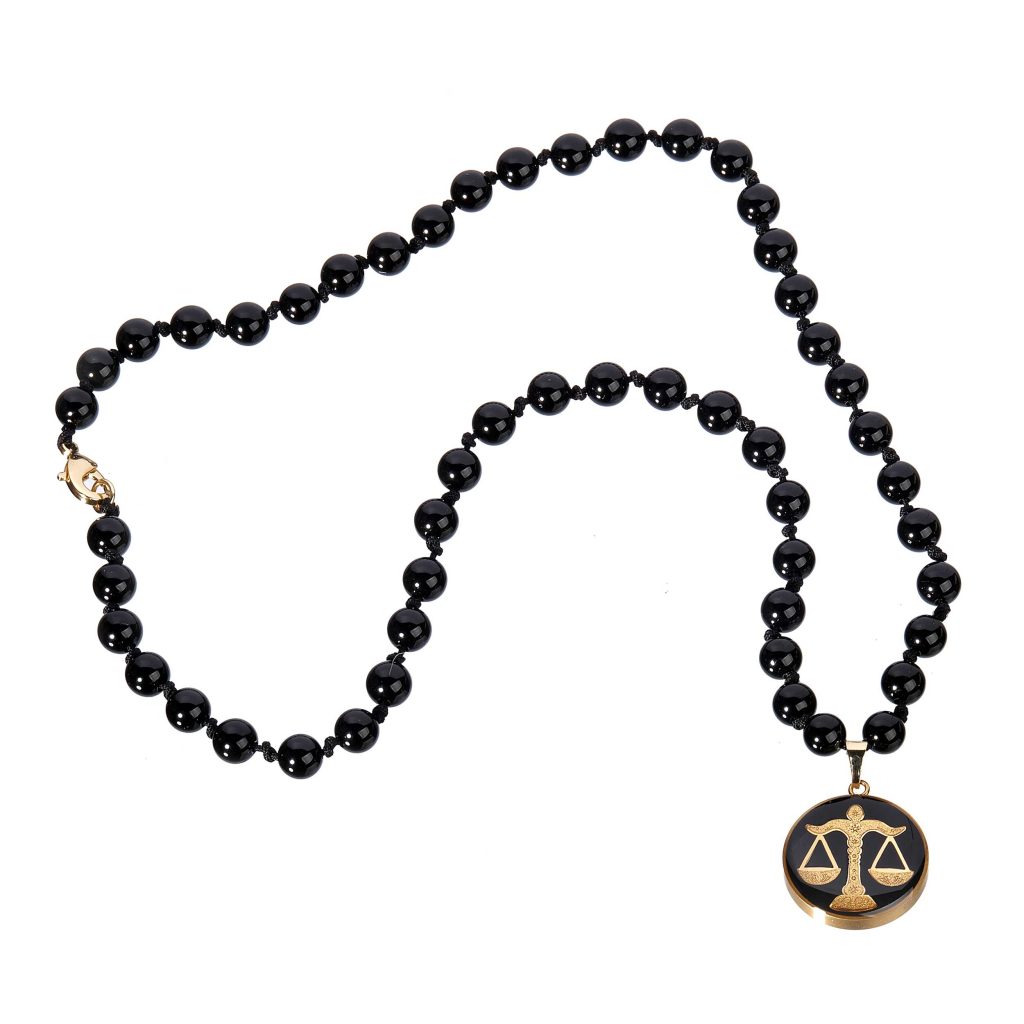Necklace is probably one of the first ornaments used by mankind. In the past, necklaces were often used in ritual, religious, magical ceremonies, or mourning and burial ceremonies, and precious metals and stones were used to make them. which indicated the wealth and status of people.

Early necklaces
Prehistoric humans often used natural materials such as feathers, bones, shells, as well as plant materials to make necklaces, but in the Bronze Age, metal jewelry replaced these ornaments.
The first historical evidence of primitive necklaces is in sculptures and art of the ancient Near East, but the first necklaces using precious metals with stone pendants were made in Europe.
Necklace in ancient civilizations
In Mesopotamia, cylindrical beads were threaded and used as jewelry.
In Babylon, pendants made of agate, lapis lazuli and gold were hung from a gold chain.
Ancient Sumerians made beads from gold, silver, lapis lazuli and agate and strung them on a string to make a necklace.
Different types of necklaces were used in ancient Egypt. The lower classes of society wore collars with natural decorations for religious ceremonies, celebrations and mourning. These collars were usually decorated with glass, pottery and hollow beads. These beads were made of precious and semi-precious materials and were strung on a thread. The upper classes of society used necklaces with gold pendants in the form of stylized plants, animals and insects.In ancient Greece, very delicate necklaces were made with the help of copper art.
Suggested article: Luxury men’s gold ring; Introducing some very beautiful models



History of ancient Iranian jewelry and ornaments
In two thousand years BC, the inhabitants of the Iranian plateau started making jewelry and ornaments with colored seeds and beads and thus showed their interest in decorations and ornaments.
Jewels and ornaments in Iran have long been prominent as a piece of clothing among different ethnic groups. The people of Qashqai tribe and Arabs of Khuzestan region have been the most users of jewelry and ornaments. Jewelry among the Qashqai people includes Mahlo necklace, clove necklace, bead necklace, anbardan, Quran frame, bangle and bead bracelet, hair band and arm band.
During the Achaemenid era, working with gold and the art of jewelry making was the result of the harmony of different traditions in a very skillful way. Some of the given jewelry and ornaments related to this period include armbands, plaques, sunshades, bracelets, rings, buttons, beads, necklaces, precious stones, etc.
Ashkanians to decorate and shine things that in the east of Iran; Other nations had learned and showed special interest. Other nations also followed the decorative methods of the Parthians. During the Parthians, jewelry and ornaments became more beautiful and magnificent. Gold and jewelry were made in smaller scales and with simpler designs. They used different types of ornaments, pendants, small pins, rings and precious stones. Belts and hats decorated with jewels were popular in this period.
Suggested article: Gift for father’s birthday for those born in September

During the Sasanian period, the art of gold and jewelry flourished, like other arts. The quality and complexity of the coins, jewels and ornaments related to this period is proof of this. Median culture and civilization can be considered as the pioneer of artistic styles, with the formation of the great Achaemenid Empire, the process of the convergence of cultures and civilizations of the ancient East to the point The turning point has arrived.
In the Sassanid era, gold consumption was also abundant in Iran. According to the writings of well-known historians such as Will Durant, Girshman, Chardin and others, in different historical periods, the production and trading activities of gold, jewelry, ornaments, stones, and precious natural materials have flourished, and the elite and wealthy class of the society in general They used precious ornaments made of gold and jewels.
There is not enough to say about the magnificence of the artistic creations of Iranians in the Achaemenid and Sassanid eras. The kings of this dynasty, such as Hormuz I, Khosrow II, paid so much attention to making aristocratic ornaments, especially the royal throne, that it has surprised historians. Byzantine historian Theophylactos and Arab historian Thaalabi wrote about the throne of the mentioned kings and admitted that Iranian gold and jewelry makers were always famous in their era.
By entering the 20th century, Iran’s gold and jewelry industry entered a new era. In any case, the history of Iran’s gold and jewelry is full of pride and honor for the creators and artists of this industry and it shows that throughout the history of this country, Iranian gold and jewelry makers have been able to create unique and incomparable creations. to attract the attention of the world.






